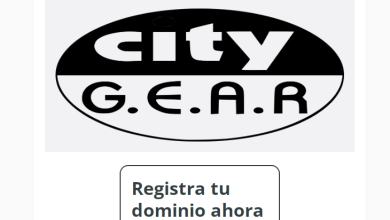
In a world where financial challenges can unexpectedly arise, the ability to recover funds swiftly and efficiently becomes paramount. Whether you’ve faced an unforeseen crisis or made investment decisions that didn’t pan out, the secrets to quick and easy fund restoration are within reach. This article unveils practical strategies and insights to empower individuals on their journey to financial recovery.
Understanding the Fund Restoration Process
Fund restoration involves reclaiming lost or diminished assets, and it’s a process that demands a comprehensive understanding. From the influence of market dynamics to individual financial decisions, various factors contribute to the need for recovery.
Common Challenges in Fund Recovery
Before diving into the secrets of quick fund restoration, it’s crucial to recognize the common challenges individuals face. Whether it’s unexpected expenses, market downturns, or personal financial missteps, these challenges can significantly impact one’s financial stability.
Secrets to Quick Fund Restoration
Setting Realistic Goals
The first secret lies in setting realistic and achievable goals. Acknowledge your current financial situation, assess your needs, and create a step-by-step plan to reach your recover objectives.
Creating a Personalized Recovery Plan
Generic approaches may not be effective. Tailor your fund restoration plan to your unique circumstances, considering your income, expenses, and long-term financial goals.
Leveraging Professional Assistance
Seeking guidance from financial experts can expedite the recovery process. Financial advisors can provide personalized strategies and insights based on their expertise.
Building Financial Resilience
In the quest for quick fund restoration, building financial resilience is key. Learn to weather financial storms by adopting habits that strengthen your financial foundation.
Exploring Alternative Income Streams
Diversifying income sources is a strategic move. Explore opportunities for additional income, such as side businesses or investments, to accelerate your fund recovery.
Technological Tools for Financial Management
Embrace technological advancements in finance. Fintech solutions offer efficient ways to manage and track your finances, providing valuable insights for quick fund restoration.
Smart Budgeting Tips
Crafting a budget that aligns with your recovery goals is essential. Identify and eliminate unnecessary expenses, redirecting those funds towards your financial rehabilitation.
Investment Strategies for Recovery
Carefully assess investment opportunities that align with your risk tolerance and financial goals. Smart investments can contribute significantly to fund restoration.
Overcoming Psychological Barriers
Financial setbacks often come with psychological stress. Develop coping mechanisms, stay positive, and build a resilient mindset to overcome hurdles in your recovery journey.
Success Stories and Inspirations
Drawing inspiration from real-life success stories can instill confidence. Explore stories of individuals who faced financial challenges and emerged stronger, proving that fund restoration is indeed possible.
Community Support and Resources
Don’t underestimate the power of community support. Local networks and financial assistance resources can provide valuable aid during your recovery process.
Evaluating Progress and Adjusting Strategies
Regularly assess your progress and be willing to adjust your strategies. Flexibility is crucial in adapting to changing circumstances and ensuring continuous improvement.
Preventing Future Financial Setbacks
To achieve lasting recovery, focus on long-term strategies. Develop habits that promote financial security, reducing the likelihood of facing similar setbacks in the future.
FAQs
- How long does it typically take to recover funds using these strategies?
- The timeline varies based on individual circumstances. Consistency and adherence to the recovery plan play crucial roles.
- Is professional assistance necessary for fund recovery?
- While not mandatory, professional guidance can significantly expedite the process and provide valuable insights.
- Are there specific industries or sectors recommended for alternative income streams?
- The choice depends on personal interests, skills, and market trends. Diversification is key to mitigating risks.
- Can these strategies be applied to small businesses as well?
- Yes, the principles discussed are adaptable to both personal finance and small business scenarios.
- What steps can one take to prevent relapse into financial difficulties?
- Building and maintaining financial resilience, coupled with prudent budgeting and investment practices, can help prevent relapses.
Conclusion
the journey to quick and easy fund restoration is multifaceted but achievable. By understanding the process, overcoming challenges, and implementing the secrets shared in this article, individuals can recover with confidence and regain financial stability.




